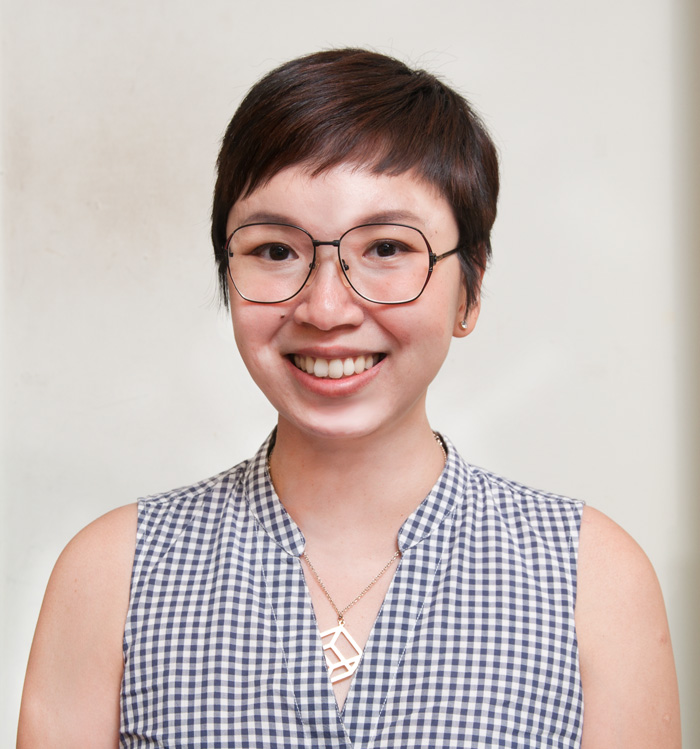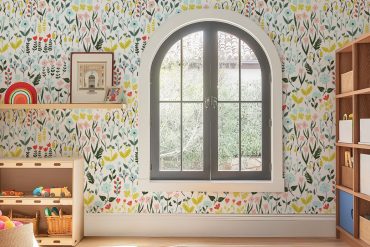
Amy Ng is a freelance illustrator from Malaysia, who also runs the popular illustration blog, Pikaland. Seven years ago Amy left her full-time job as a magazine editor for a regional architecture and design magazine to launch her freelance business and she hasn’t looked back. I am thrilled to welcome her to Pattern Observer to share her inspiring story.
When did you know that it was the right time to leave your job?
I planned my exit a year before – I carved a few milestones that I needed to reach before I could say goodbye to the safety net of having a full-time employer; such as the ability to make a bit of income from my website/freelance projects/etc, having a website + shopping cart up, etc. Back then WordPress wasn’t as easy as it was to use and the only shopping cart software that I would consider using was ZenCart (which you’d need to customize on your own), and the world of creating websites (and a blog) was a mystery! So I dove in headfirst, learning about CSS and HTML and built my own website and a shop during my free time – which I did at 8pm, after I came home from work. I worked until 3am for a few months just to get things looking and working right! I also had an added challenge – me and my husband put down a mortgage for a house right before I left my job. I factored my half of the mortgage into my plans and made the leap anyway!
What steps, if any, did you take to prepare to launch your freelance business?
I think that setting goals to achieve before I left my job was very helpful for me – it was a self-directed bootcamp in a way. If I didn’t manage to hit my targets, then I felt that I was not fit to go at it on my own. Freelancing has a lot to do with discipline and being able to concentrate on the bigger picture, so I knew that the earlier I started, the easier it would be as I go along. I gave up watching TV for 2 years because I didn’t have time! I knew if I wanted to be on my own that badly, then I needed to put the hours in to get the results.
I also maintained a good relationship with everyone I’ve met along the course of my work as a magazine editor – from big shot bosses to junior staff. And they were very kind to me when they found out I was freelancing. A lot of my work came from word-of-mouth referrals, even until today. I was also lucky because I carved out a name for myself in niche writing – back then there weren’t as many people who could write about architecture and design in an easy, laid-back, digestible format. I received several illustration commissions too!
What does your freelance business currently look like? What sorts of jobs are you doing?
My freelance business is ever evolving! I just finished my 3-month contract with a digital PR agency as a creative lead, where I conceptualize and lead the artistic direction for promotional campaigns (both offline and online) for various clients. My biggest client so far was Tesco, and I pitched the idea of using illustrations for a microsite for their campaign to highlight Tesco’s delivery services. I also revamped the design for their delivery trucks! So I liaise and work with illustrators, photographers and graphic designers to achieve the effect I want in a campaign.
Throughout my freelance career, I worked primarily as a writer and copywriter for corporate clients, and I was also tasked with managing each project as I got other subcontractors on board. I’ve been commissioned on a part-time basis as well as being a contract staff; and after going through all the varieties of freelance engagements, I prefer my work to be on a per-project basis as I find that it’s a better use of my time.

What does a typical day look like? Where are you investing your time?
For the contract position that I just ended, I spent 2 days a week in the office, or at least 2 days worth of billable hours if I’m working from home. Working in an agency meant that things don’t have set hours, and when coupled with client demands, it can easily see me spend more than 3-4 days of billable hours on this position itself. I chose not to renew my contract because I found that it took a lot more time than what I had envisioned and ate away a sizable chunk that I would have been able to devote to Pikaland.
Pikaland has opened up opportunities for me, and one of that is teaching at a local college of art and design as an adjunct lecturer. I go in once a week, teach and spend time with students (and learning along the way too). I spend quite a bit of time on research and prep for materials as well, which I enjoy. A lot of my entries for Pikaland is now based on the research and synthesis of the information that I’ve done.
I find that having a freelance business in addition to running Pikaland feeds my creativity. With Pikaland I don’t actually get to meet with a lot of people face to face (most of my correspondences are through emails), but as a freelancer and teacher, I do get lots of opportunities to meet other people, and it widens my circle to allow an interesting mix of ideas to brew. Both of them feed off from one another.
Looking back on it, what would you have done differently when starting your business?
Looking back, I should have learned more about investing my money better. While a lot of my income in the beginning was directed back into my own business, what I should have done was to put aside some of it to diversify my risk; especially in investments that could withstand inflation and grow in value from year to year. Don’t forget about the effects of compound interests too – if you start early, no matter how small the amount, it will really affect things down the line.
What has had the most positive impact on your business?
Cultivating relationships even before I needed them. I’m a curious person by nature, so I love talking to people and finding out more about them, and how I can help them. And when you’re being sincere, others will know! I’ve been incredibly lucky to be on the receiving end of countless recommendations, job referrals and repeat clients who has helped me on this journey!
Any words of wisdom for designers considering a freelance career?
I think that it’s important for freelancers to to be flexible in their journey. The best thing about being a freelancer is that you can carve out what you’d like the future to look like – even if you don’t know what that future looks like from where you are. Don’t focus on just the money, especially in the beginning – having savings helps a lot to tide you over when times are tough (I came from a frugal family so I was fine with not being able to spend much of my money on things that are “wants” instead of “needs”) The longer I freelanced, the more I realized the sort of projects that aren’t worth taking on (even if they are worth a lot) and I got better at saying no. Don’t be afraid to say no; opportunities will always be there if you know how and where to look. I think it’s important to be ready and to be able to spot them instead of being busy doing things you don’t like – otherwise why would you go freelance in the first place?
And lastly, perhaps you can try and see if you’re able to land a client or two before your employment ends? This will work especially in non-competing industries (or if you’re doing a career change) and will really help you ease into being a full-time freelancer on a more confident footing – this goes back to setting goals for yourself before you bid adieu to full-time work!
Visit Amy at Pikaland for more information or to stay in touch!
Do you want to improve your communication process with potential clients? Get started by downloading our free Rate Sheet Template. Access your copy here.












